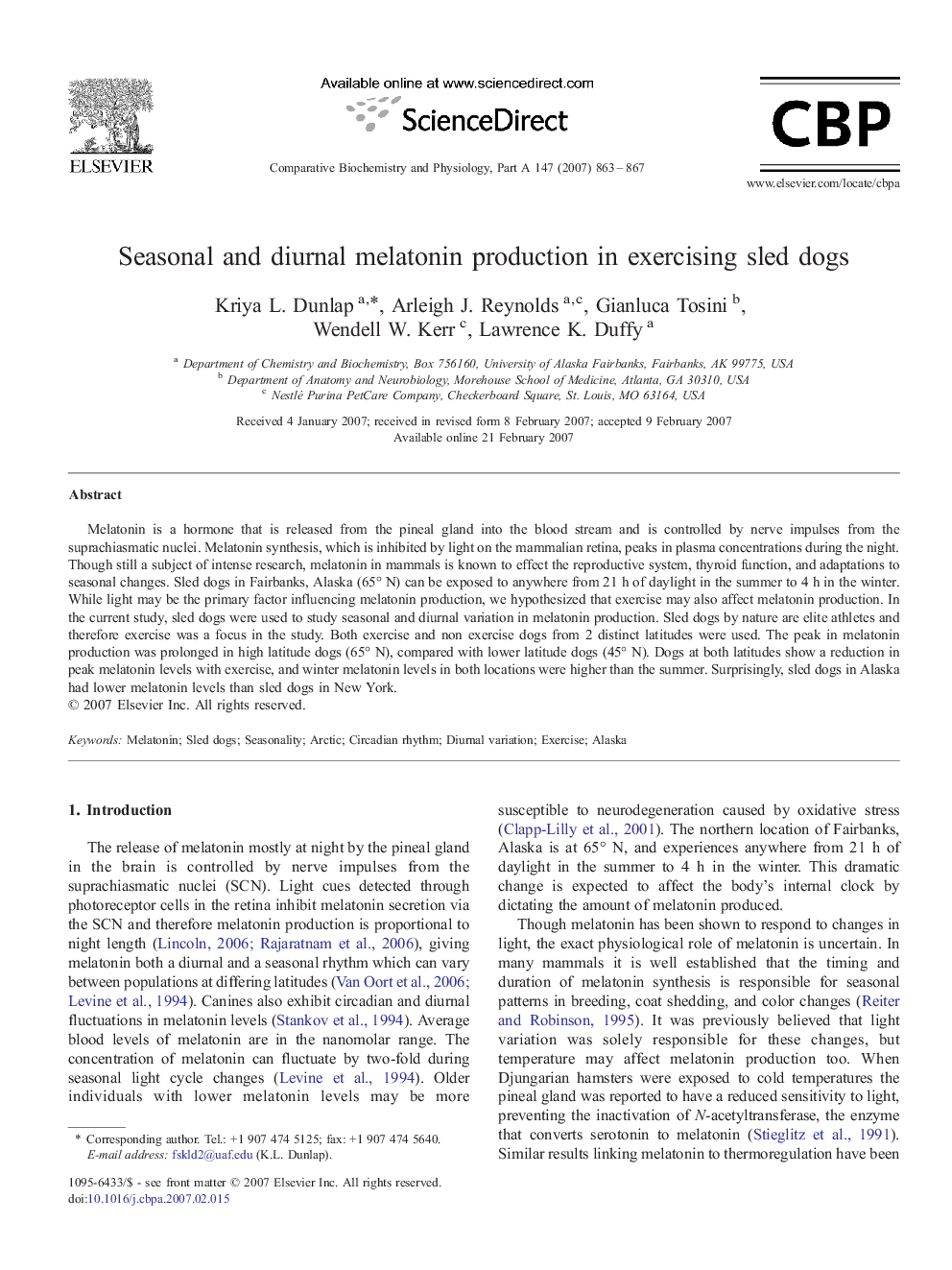| Article ID | Journal | Published Year | Pages | File Type |
|---|---|---|---|---|
| 1974777 | Comparative Biochemistry and Physiology Part A: Molecular & Integrative Physiology | 2007 | 5 Pages |
Melatonin is a hormone that is released from the pineal gland into the blood stream and is controlled by nerve impulses from the suprachiasmatic nuclei. Melatonin synthesis, which is inhibited by light on the mammalian retina, peaks in plasma concentrations during the night. Though still a subject of intense research, melatonin in mammals is known to effect the reproductive system, thyroid function, and adaptations to seasonal changes. Sled dogs in Fairbanks, Alaska (65° N) can be exposed to anywhere from 21 h of daylight in the summer to 4 h in the winter. While light may be the primary factor influencing melatonin production, we hypothesized that exercise may also affect melatonin production. In the current study, sled dogs were used to study seasonal and diurnal variation in melatonin production. Sled dogs by nature are elite athletes and therefore exercise was a focus in the study. Both exercise and non exercise dogs from 2 distinct latitudes were used. The peak in melatonin production was prolonged in high latitude dogs (65° N), compared with lower latitude dogs (45° N). Dogs at both latitudes show a reduction in peak melatonin levels with exercise, and winter melatonin levels in both locations were higher than the summer. Surprisingly, sled dogs in Alaska had lower melatonin levels than sled dogs in New York.
